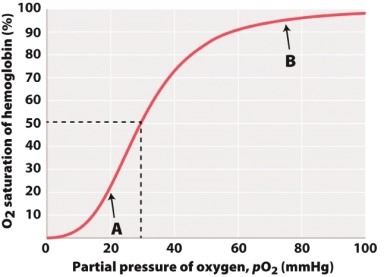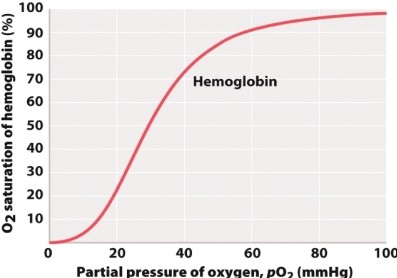A) Hearts in both groups function to pump blood to the respiratory surface.
B) Hearts in both groups contain mixed oxygenated and deoxygenated blood.
C) Hearts in both groups are a bridge between the systemic and pulmonary circulatory pathways.
D) Hearts in both groups have two atria.
Correct Answer

verified
Correct Answer
verified
Multiple Choice
Which of the following statements about bird respiration is FALSE?
A) Air flowing through the air channels in the lungs moves in a tidal fashion.
B) Oxygen is exchanged between the air and the bloodstream in the lungs, but not in the air sacs.
C) The unidirectional flow of air through a bird's lungs maintains a larger concentration gradient for diffusion than can be obtained through tidal breathing.
D) Bird lungs receive fresh air during both inhalation and exhalation.
E) It takes two ventilation cycles for a single breath of air to move through a bird's respiratory system.
Correct Answer

verified
Correct Answer
verified
Multiple Choice
Which of the following CORRECTLY describes the path of a drop of blood leaving the human heart?
A) heart arteries arterioles capillaries venules veins heart
B) heart veins venules capillaries arterioles arteries heart
C) heart arterioles arteries capillaries veins venules heart
D) heart venules veins capillaries arteries arterioles heart
E) heart arteries veins capillaries arterioles venules heart
Correct Answer

verified
Correct Answer
verified
Multiple Choice
The heartbeat originates in the:
A) sinoatrial node located at the junction of the vena cava and the right atrium.
B) sinoatrial node located at the junction of the vena cava and the left atrium.
C) atrioventricular node located in the wall of the atrioventricular valve.
D) atrioventricular node located in the tissue separating the atria and ventricles.
E) sinoatrial node and atrioventricular node simultaneously.
Correct Answer

verified
Correct Answer
verified
Multiple Choice
Which of the following factors would not increase the amount of oxygen released from hemoglobin?
A) an increase in the acidity or pH of blood
B) an increase in CO2 in the bloodstream
C) the formation of lactic acid by muscles
D) an increase in aerobic respiration
E) an increase in pO2 in the lungs
Correct Answer

verified
Correct Answer
verified
Multiple Choice
Which of the following occurs during exhalation?
A) Negative pressure in the lungs increases.
B) The diaphragm contracts and flattens out.
C) Intercostal muscles elevate the ribs.
D) The volume of the thoracic cavity increases.
E) None of the answer options is correct.
Correct Answer

verified
Correct Answer
verified
Multiple Choice
Terrestrial insects are large enough that diffusion through simple openings on their body surface is insufficient to supply oxygen to their tissues. Instead, insects deliver oxygen:
A) to their tissues through a series of lungs within their body.
B) directly to their tissues through branching structures called tracheoles.
C) to their tissues by opening spiracles that allow oxygen to enter their body cavity directly.
D) to their tissues by opening their mouths and creating negative pressure that draws air in to move through their tissues.
Correct Answer

verified
Correct Answer
verified
Multiple Choice
Which of the following statements is FALSE?
A) Circulation requires a pump to generate pressure to drive flow, whereas ventilation does not.
B) Ventilation increases the concentration of oxygen in the air on the outside of the respiratory surface.
C) The same amount of oxygen enters the blood through diffusion as is transported by circulation.
D) Oxygen and carbon dioxide both move across the respiratory surface by diffusion.
E) Larger, more complex animals rely on bulk flow and diffusion to deliver oxygen to their cells, whereas some smaller, simpler animals rely on diffusion alone.
Correct Answer

verified
Correct Answer
verified
Multiple Choice
Which of the following would INCREASE the rate of flow in blood vessels?
A) decreasing the length and increasing the diameter of the blood vessels
B) decreasing the length and diameter of the blood vessels
C) increasing the length and decreasing the diameter of the blood vessels
D) None of the answer options is correct.
Correct Answer

verified
Correct Answer
verified
Multiple Choice
Organisms that use bulk flow to move oxygen are able to:
A) move more quickly through their environment than organisms that only use diffusion.
B) achieve larger size than organisms that only use diffusion.
C) remove carbon dioxide waste from their tissues, whereas organisms that use diffusion cannot.
D) live in aquatic environments, whereas organisms that use diffusion cannot.
Correct Answer

verified
Correct Answer
verified
Multiple Choice
In a mammal's bloodstream, where would you expect to find oxygen?
A) dissolved in blood plasma
B) attached to the heme group of myoglobin in red blood cells
C) attached to the heme groups of hemoglobin in red blood cells
D) attached to the heme group of myosin in red blood cells
E) dissolved in hemolymph
Correct Answer

verified
Correct Answer
verified
Multiple Choice
A genetic mutation causes an individual to produce hemoglobin molecules that do not change their binding affinity for oxygen, even after oxygen binds to a single heme site. How will this mutation affect the transport of oxygen through the individual's bloodstream?
A) More oxygen will be transported by hemoglobin to tissues throughout the body.
B) Oxygen will not be bound or released from hemoglobin as readily, limiting O2 delivery to the tissues.
C) The same amount of oxygen will be transported by hemoglobin to tissues throughout the body.
Correct Answer

verified
Correct Answer
verified
Multiple Choice
Osmosis requires:
A) high Na+ concentrations.
B) a nonpermeable membrane separating areas with Na+ ions from areas with Cl- ions.
C) a semipermeable membrane separating areas of different solute
D) concentrations.
E) diffusion of salt through a semipermeable membrane.
Correct Answer

verified
Correct Answer
verified
Multiple Choice
At arrow A in the accompanying graph, the hemoglobin is only 20% saturated, and at arrow B it is 97% saturated. The difference is due to the fact that: 
A) oxygen binds irreversibly to hemoglobin in the lungs.
B) pH differs in muscle capillaries vs. pulmonary capillaries.
C) oxygen binds reversibly to hemoglobin with varying affinity due to cooperative binding.
Correct Answer

verified
Correct Answer
verified
Multiple Choice
Referring to the accompanying graph, when the partial pressure of oxygen is 38 mmHg, the % saturation of hemoglobin is expected to be: 
A) 98%.
B) 70%.
C) 50%.
D) 30%.
Correct Answer

verified
Correct Answer
verified
Multiple Choice
As fluid moves through a vessel, which factors determine the flow resistance?
A) the viscosity of the fluid
B) the length of the vessel
C) the radius of the vessel
D) the pressure exerted by the heart
Correct Answer

verified
Correct Answer
verified
Multiple Choice
Which of the following statements about the coordination of the heartbeat is FALSE?
A) Each heartbeat is generated by signals from the nervous system that stimulate the heart's pacemaker cells.
B) Cardiac muscles are in electrical continuity, which allows for synchronous contraction of the two atria followed by synchronous contraction of the two ventricles.
C) Under normal conditions, the electrical separation between the atria and ventricles prevents all four chambers from contracting synchronously.
D) Following activation of the AV node, the action potential is transmitted to the base of the ventricles by a modified set of cardiac muscle fibers.
E) None of the answer options is false.
Correct Answer

verified
Correct Answer
verified
True/False
Unlike open circulatory systems, closed circulatory systems are more efficient at delivering oxygenated blood directly to tissues according to their metabolic and energetic demands.
Correct Answer

verified
Correct Answer
verified
Multiple Choice
Which of the following organisms would be able to extract the GREATEST percentage of oxygen from their respiratory medium?
A) salmon
B) sparrows
C) humans
D) blue whales
E) seagulls
Correct Answer

verified
Correct Answer
verified
Multiple Choice
In the disease elephantiasis, lymph vessels become blocked as a result of infection with parasitic worms. Which of the following processes would be impacted by this disease?
A) the return of excess interstitial fluid to the bloodstream
B) the diffusion of water and small molecules across the wall of the capillary
C) the flow of water back into the capillaries by osmosis
D) the generation of pressure to filter materials through the capillary walls
E) the exchange of oxygen and other materials between the blood and body cells
Correct Answer

verified
Correct Answer
verified
Showing 21 - 40 of 153
Related Exams